Agent UML is a notation for modeling agent-oriented systems using the Unified Modeling Language (UML). It represents key concepts like agents, roles, capabilities, services, and interactions. Agents in Agent UML are modeled as classes with additional properties specifying roles, organizations, and protocols. Capabilities and services define the tasks agents can perform. Interactions are represented using extended sequence diagrams to show concurrent message passing between agents. Agent UML aims to provide a standard modeling approach for agent-oriented software engineering.
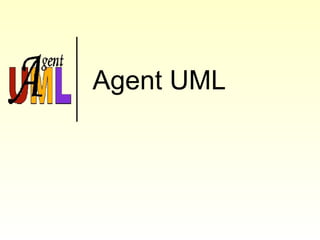


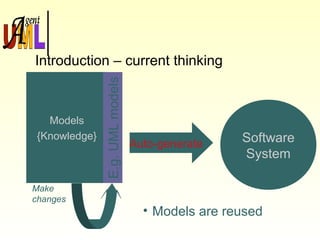

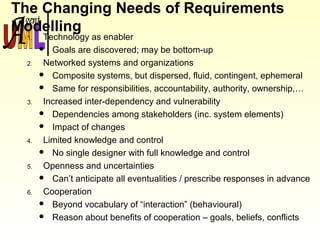

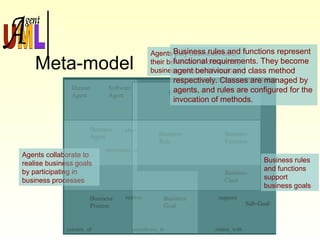

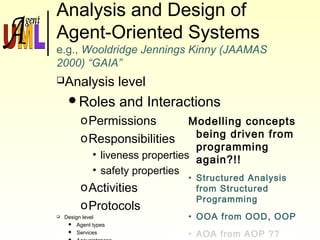
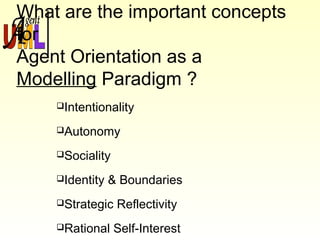



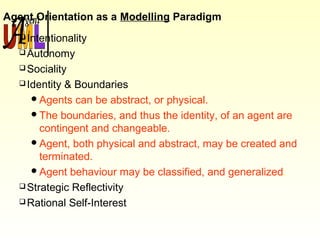
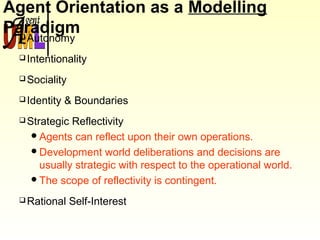

![What is an agent
An agent is an hardware or software system
placed in an environment that enjoys the
following properties:
oAutonomy
oSocial ability
oReactivity
oProactivity
[Wooldridge et al, 1995]](https://image.slidesharecdn.com/agentuml-140428003030-phpapp02/85/Agent-uml-18-320.jpg)
![A stronger notion of agent
Another stronger notion assigns to the agent also
the following properties:
Mentalistic notions:
o Beliefs
o Desires
o Intentions
Emotional notions:
o Trust
o Friendship
o Suspiciousness
[Wooldridge et al, 1995]](https://image.slidesharecdn.com/agentuml-140428003030-phpapp02/85/Agent-uml-19-320.jpg)

![Agent-oriented programming (1)
Agent-oriented programming (AOP) is a
specialisation of object-oriented programming (OOP)
in the way the computational system is conceived:
“The computational system is seen as composed of
communicating modules, each with its own way of handling
messages.” [Shoham, 1993]
The (mental) state of modules (agents) consists of
components such as beliefs, capabilities and
intentions.](https://image.slidesharecdn.com/agentuml-140428003030-phpapp02/85/Agent-uml-21-320.jpg)




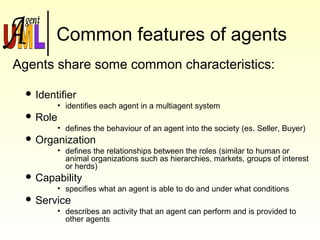





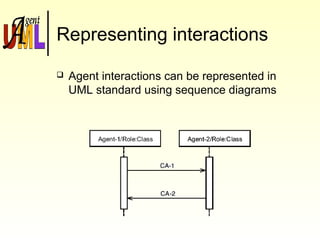

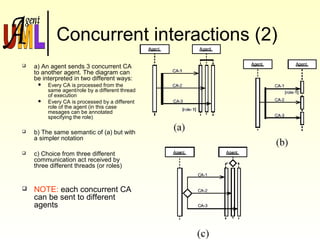

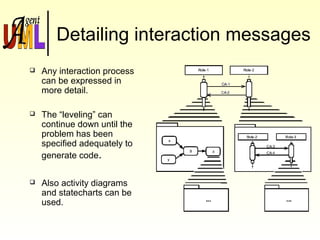
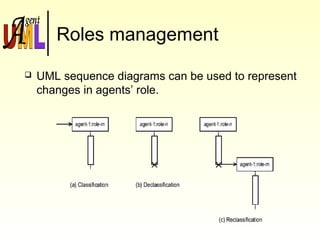
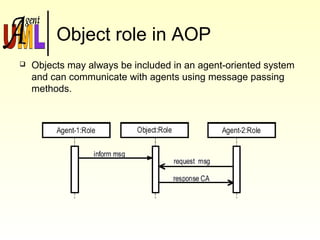
![References (1)
Agents
[Wooldridge et al, 1995]
Wooldridge and Jennings
Intelligent Agents: Theory and Practice
Knowledge Engineering Review
Volume 10 No 2, June 1995
Cambridge University Press
(www.csc.liv.ac.uk/~mjw/pubs/ker95/ker95-html.html)
[Shoham, 1993]
Y. Shoham
Agent-oriented programming
Artificial Intelligence
60(1):51-92
(http://www.ncat.edu/~esterlin/c7902s02/Notes/Shoham.pdf)](https://image.slidesharecdn.com/agentuml-140428003030-phpapp02/85/Agent-uml-39-320.jpg)
